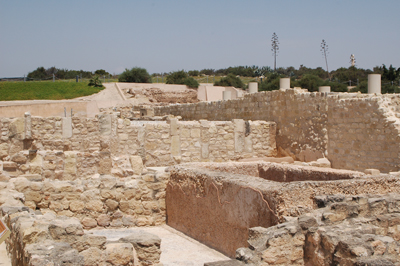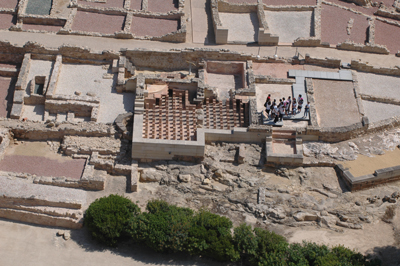MARQ Alicante utiliza cookies propias y de terceros para mejorar su experiencia de navegación
y realizar tareas de analítica. Si continúa navegando, entendemos que acepta nuestra política de calidad y de cookies.
MARQ Alicante utiliza cookies propias y de terceros para mejorar su experiencia de navegación
y realizar tareas de analítica. Si continúa navegando, entendemos que acepta nuestra política de calidad y de cookies.
TOSSAL DE MANISES

.jpg)
El Tossal de Manises is the site of the Roman town of Lucentum, the ancient city of Alicante. It is located on top of a hill (tossal) near to the coast and at a height of 38 metres above sea level. It is in the La Albufereta area of Alicante, about 3.5 kilometres from the modern day city centre. The entire urban area of Lucentum (around 25,000 m²) has survived today and is surrounded by a perimeter wall, some 600 metres long. Since 1961 the site has been declared a Monument of Historic and Artistic Importance.
The origins of the site date back to the end of the 5th or beginnings of the 4th century BC, although little of this early occupation is actually known. However, at the end of the 3rd century BC significant changes occurred to the site. Fortifications were built which completely surrounded the site with towers and in some stretches, an antemural. This fortification would change the nature of the settlement site forever, and would determine its physical characteristics and extent of later building work and the Roman town.

This first urban phase was destroyed around 200 BC and el Tossal went through a long period of abandonment and decline. This began to change at the end of the 3rd century BC which is indicated by the evidence of a new period of construction in which the town walls were rebuilt. From the middle of the 1st century BC important building works were begun, during which time the entire urban street plan was restructured. During the rule of Augustus, the first Roman Emperor, the town acquired the status of municipium which meant that it governed itself and had its own magistrates and institutions of a clearly Roman nature. This is when the name of Lucentum is first recorded epigraphically and historically. At the end of the 1st century BC and throughout the 1st century AD the town enjoyed a prosperous period which is represented by various building works. These included the forum, two public bath houses, a new port, the sewage system, at least one temple, and the extension of the urban area outside the town walls.

At the end of the 1st century AD the first signs of decline appeared. This was the beginning of a period which would culminate with the abandonment and disappearance of the town in the 3rd century AD. After a period of various and sporadic use during which the site was used as a source for building materials, the area was once again occupied. Between the 8th and 10th centuries AD the site became a maqbara or cemetery, defined by Islamic funerary rites.
Visit the 360º view of this deposit
Localización | Horarios | Tarifas | Mapa web | Política de privacidad
SEDE ELECTRÓNICA | info@marqalicante.com | Tlf.: 965 149 000

Página diseñada y realizada por
CREHAZ
COMUNICACIÓN Y TECNOLOGÍ